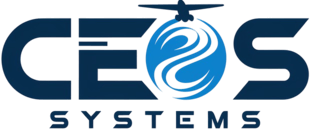Step into the fascinating world of future aviation as we explore the groundbreaking Airbus A360 concept. This revolutionary aircraft design, while not yet in production, represents a bold vision for addressing tomorrow’s air travel challenges. Let’s delve into how this innovative concept could reshape the aviation landscape.
The aviation industry stands at a pivotal moment with the conceptual development of the Airbus A360. This innovative aircraft represents Airbus’s strategic response to evolving air travel demands and environmental challenges. As global air traffic expands, the A360 concept emerges as a potential game-changer, incorporating cutting-edge technologies and forward-thinking design principles that could set new industry standards.
Overview of Airbus A360
The Airbus A360 embodies a fascinating chapter in aviation development—a conceptual aircraft showcasing Airbus’s technological aspirations. While not in commercial production, this innovative design addresses specific market needs through:
- Next-generation materials integration
- Advanced propulsion systems
- Revolutionary aerodynamics
- Enhanced operational efficiency
- Improved passenger experience
Significance in the Aviation Industry
Despite not reaching production status, the A360 concept has made significant contributions to aviation advancement. It serves as a catalyst for industry-wide innovation by:
- Establishing new technical benchmarks
- Driving competitive development
- Addressing environmental concerns
- Enhancing fuel efficiency standards
- Revolutionizing passenger comfort concepts
Innovative Features of the Airbus A360
The A360 concept showcases breakthrough technologies and engineering solutions that push beyond current commercial aircraft capabilities. These innovations combine advanced materials, sophisticated avionics, and groundbreaking propulsion systems to create a theoretical aircraft with superior performance characteristics.
Advanced Aerodynamics and Design
| Feature | Benefit |
|---|---|
| Optimized wing configuration | Enhanced lift and reduced resistance |
| Advanced winglets | Improved fuel efficiency |
| Lightweight composite materials | Reduced aircraft weight with maintained structural integrity |
| Optimized fuselage design | Maximized interior space with minimal drag |
Cutting-edge Technology Integration
The A360 concept represents a comprehensive approach to next-generation aviation technology, featuring:
- Augmented reality displays in the flight deck
- Intuitive control systems reducing pilot workload
- Smart cabin designs with IoT connectivity
- Advanced environmental control systems
- Hybrid-electric power configurations
- Innovative seating arrangements
Sustainability and Environmental Impact
The conceptual Airbus A360 marks a transformative approach to environmentally responsible aviation. With the industry contributing 2.5% of global carbon emissions, this innovative design prioritizes sustainability as a fundamental principle rather than an afterthought. Unlike its predecessor, the A380—which Qatar Airways’ CEO criticized as “too unsustainable to operate”—the A360 concept represents a radical departure from conventional aircraft design.
By focusing development resources on revolutionary sustainable technologies rather than intermediate models, Airbus demonstrates its commitment to addressing aviation’s environmental challenges head-on. This strategic approach acknowledges that meaningful emissions reduction requires more than incremental improvements.
Eco-friendly Innovations
- Integrated sustainable fuel system compatible with 100% biofuels and synthetic SAF
- Biodegradable interior components reducing lifecycle environmental impact
- Recyclable structural elements for sustainable manufacturing
- Intelligent energy management systems optimizing power distribution
- Environmental considerations driving technological development
Reducing Carbon Footprint
| Technology | Environmental Impact |
|---|---|
| Hybrid-electric propulsion | Up to 25% CO2 emissions reduction |
| Hydrogen fuel cell APU | Zero emissions during ground operations |
| Advanced flight management computers | Optimized fuel consumption through real-time route adjustment |
| Lightweight construction materials | Reduced energy requirements during all flight phases |
The Future of Aviation with Airbus A360
The aviation industry stands at a critical crossroads, with the A360 concept embodying Airbus’s vision for next-generation air travel. As global air traffic projections indicate a doubling within two decades, this innovative concept addresses both capacity demands and stringent environmental regulations while anticipating evolving passenger expectations.
Predicted Industry Changes
- Accelerated transition toward sustainable operations driven by regulatory frameworks
- Market fragmentation requiring route-specific aircraft optimization
- Integration of advanced AI systems for operational optimization
- Widespread adoption of alternative propulsion technologies
- Enhanced digitalization of aircraft operations and maintenance
- Modular design approaches enabling customization based on operational requirements
Airbus A360’s Role in Shaping the Future
The Airbus A360 concept functions as an advanced technological laboratory, serving as a crucial platform for developing and refining cutting-edge aviation innovations. Rather than being constrained by immediate production demands, this approach enables Airbus engineers to explore groundbreaking solutions with greater freedom and creativity.
- Accelerated innovation development without manufacturing timeline constraints
- Rapid technology transfer to existing production models
- Enhanced flexibility in testing revolutionary concepts
- Reduced development cycles for new technologies
- Streamlined integration of successful innovations across the product line
The A360 concept represents a fundamental shift in aircraft design philosophy, emphasizing holistic systems integration over individual component optimization. This comprehensive approach recognizes the complex interconnections in modern aircraft design, where improvements must be harmonized across multiple domains:
| Design Domain | Integration Focus |
|---|---|
| Aerodynamics | Coordination with structural materials and propulsion systems |
| Propulsion | Alignment with energy management and performance goals |
| Materials | Balance between strength, weight, and sustainability |
| Systems | Seamless interaction with all aircraft components |
While speculation continues about whether Airbus will produce an actual A360 or A370 model, the concept’s influence extends far beyond potential production plans. Its greatest impact lies in catalyzing innovations that are already transforming commercial aviation across multiple aircraft types and manufacturers, establishing new standards for future aircraft development.
